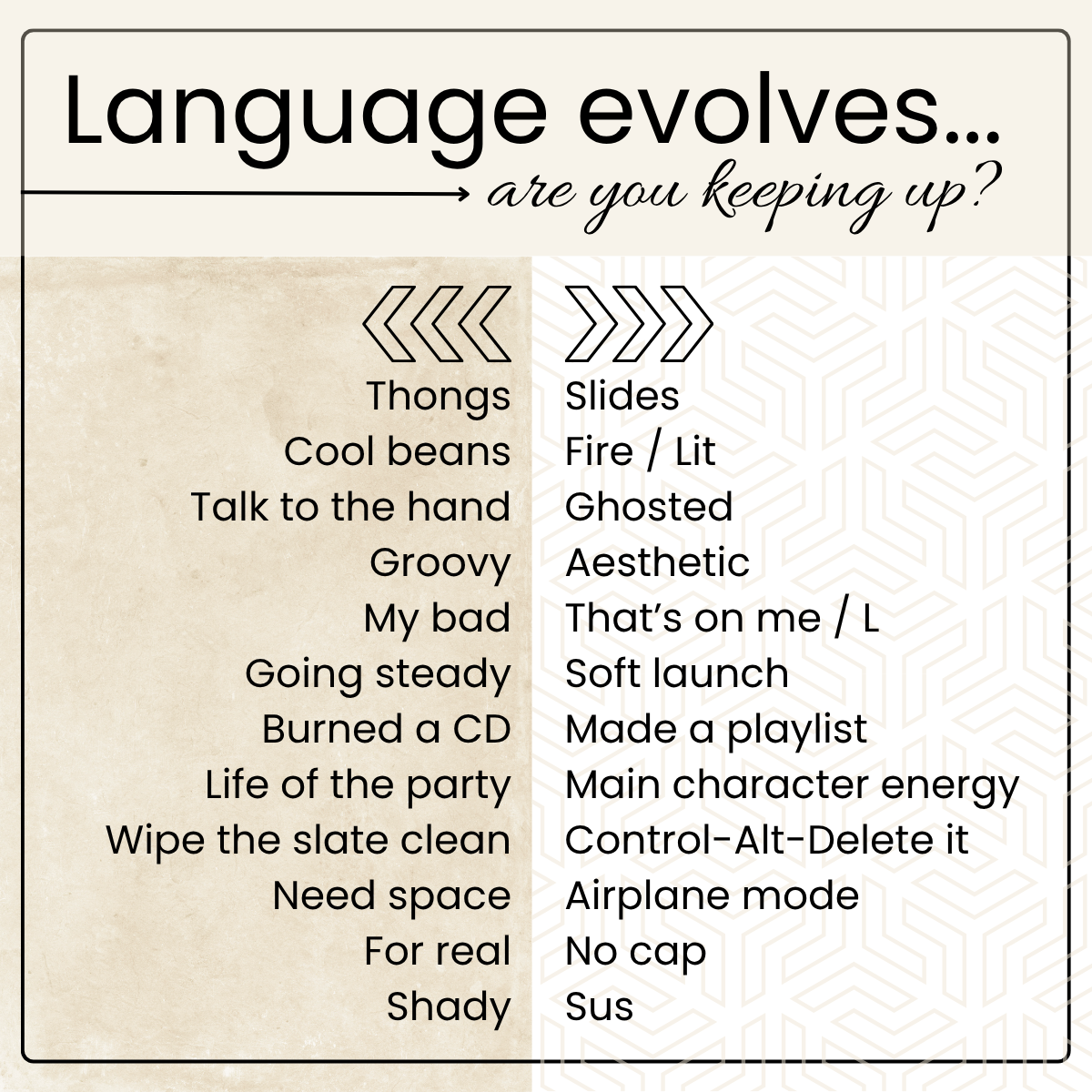Lost in Translation? How Generational Language Gaps Undermine Communication at Work
Remember when flip-flops were called thongs? If that rings a bell, you’re probably a Boomer or Gen Xer—and you’ve likely had to adapt your language over the years. The truth is, language is constantly evolving, and in today’s multigenerational workplace, what feels normal or harmless to one person may come across as awkward—or even passive-aggressive—to another.
These misunderstandings aren’t just about words. Tone, punctuation, emojis, slang, and even communication platforms carry unspoken rules. And those rules vary significantly by generation.
Communication Is More Than What You Say
Consider a few common misfires that happen every day at work:
Ending a message with a period might feel professional to some, but cold or abrupt to others. “Thanks.” can feel sincere—or like something’s wrong.
A thumbs-up emoji might seem efficient or encouraging to one person and dismissive to another.
Short replies like “K” or “Noted” may read as clear and direct, or as irritated and emotionally distant, depending on who’s reading.
Slang like “That’s cap” or “I’m dead” can add humor and personality for some—but leave others confused or concerned.
A long email may feel thorough and respectful to an older colleague but inefficient or unnecessarily formal to a younger one.
Feedback like “This needs work” might be seen as honest and helpful—or as unnecessarily harsh without context.
What’s happening here isn’t bad intent. It’s misaligned expectations, shaped by generational norms and different understandings of tone.
Why It Matters
These small communication mismatches can create big ripples. They affect how we build trust, give feedback, interpret tone, and collaborate across teams. Without realizing it, we may offend, confuse, or alienate colleagues simply because we’re not speaking the same generational language.
When these moments go unacknowledged, they can lead to unnecessary tension or even fractured relationships:
“She’s overreacting.”
“He’s being rude.”
“They just don’t get it.”
In reality, we may just be talking past each other.
What You Can Do
You don’t need to memorize every emerging acronym or abandon your natural communication style. But cultivating awareness—and a bit of humility—can make a big difference. Try asking yourself:
How might this message be interpreted by someone from a different generation?
Am I relying on tone or shorthand that could be unclear or misread?
Could I clarify my intention with a few extra words or a change in format?
Even better, make space for your team to talk about their communication preferences. Clarifying norms around tools, tone, and timing can reduce misunderstandings and build stronger working relationships across generations.
The Bottom Line?
Language is always shifting—and so is the workplace. But with curiosity and care, we can adapt together. Because good communication isn’t just about what you say. It’s about how—and to whom—you say it.
Let’s keep the conversation going, no translation required.
